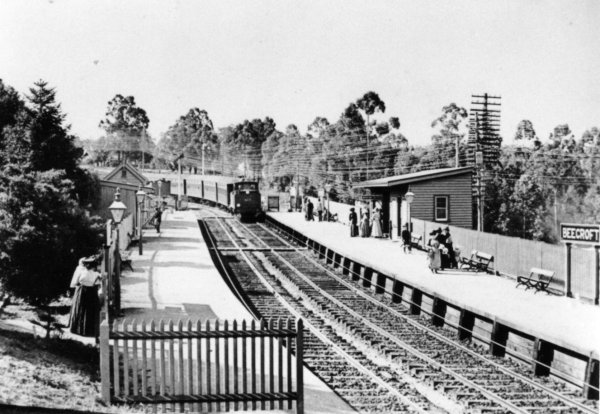Does Beecroft Have Anything To Do With Beekeeping?
|
||||||||||
The construction of the railway line from Strathfield to Hornsby took three years, from 1883 to 1886. Initially it was a single track, slightly over 14 miles (22km) in length. There were seven stations along the way; Strathfield (formerly Redmyre), Ryde, Dundas, Field of Mars, Beecroft, Thornleigh and Hornsby. Only the stations at Ryde, Dundas and Hornsby were manned by railway staff.
 |
Beecroft station was named by the Minister for Lands, Mr Henry Copeland, after the maiden name of his successive wives – two sisters, Hannah and Mary Beecroft. The station was situated in the Field of Mars Common and no settlement was yet in existence. However, the village rapidly developed once the station was established and a railway post office was set up in 1892, which was transferred to Thomas Stobo’s general store in 1896. The first church, St John’s Church of England, opened in 1891 followed by a Wesleyan chapel in 1895.
The government sale of the Field of Mars Common needed distinctively named thoroughfares. Copeland is remembered in Copeland Road and his wives in Hannah and Mary Streets. Albert Road was named after Prince Albert (1819-1861) the consort to Queen Victoria whom he married in 1840. York Street records the capital city of Yorkshire in England where Henry Copeland was born. Edward Maher purchased 28 acres of land in 1855 and gave his name to Mahers Road. Wongala Crescent, formerly named Railway Parade, is an Aboriginal word meaning “boomerang” and Bambara Crescent is an aboriginal name meaning “forest”.
Trevor Patrick is a local historian of the north-west of Sydney, Australia. His latest book, In Search of the Pennant Hills, recounts some of these stories (and others) in more detail.